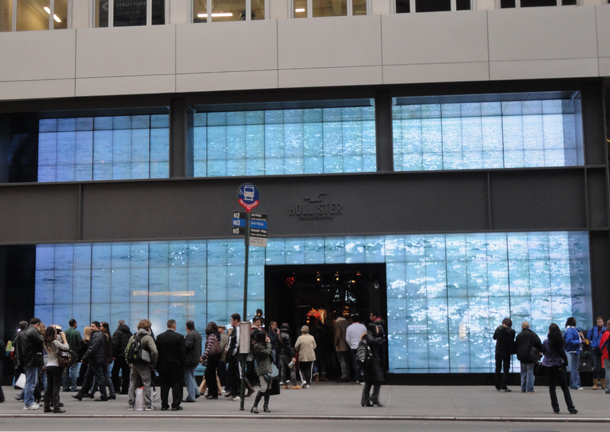
Hollister 5th Avenue Storefront, New York City. Image courtesy of Haute Announcement.
We're in the era of digital everything. Mobile phones made the shift from pixelated black-and-white screens to color displays only eight years ago, and today it seems as though you can access the entire world from the palm of your hand -- checking email, sharing photos, soliciting fashion advice in real-time, turning on and off lights, and even starting your car. Given this evolution, it should come as no surprise that I'm projecting (no pun intended) that digital surfaces will emerge as a leading material and surface in the coming years, one which will be specified and installed by both design professionals and homeowners alike.
In prior years, digital media, at least in architectural and design instances, has been reserved more so for art and sculpture than common surfacing. One favorite example, Hiroshima, by world renowned, Krzysztof Wodiczko, projects motion images of the hands of fourteen people, including survivors of the atomic bomb and the youth of Hiroshima, upon a river embankment below the A-Bomb Dome (Source: Ufer!). I was fortunate to have Krzysztof as a professor some years ago, after he'd already created more than seventy large-scale slide and video projections of politically-charged images on architectural façades and monuments worldwide.
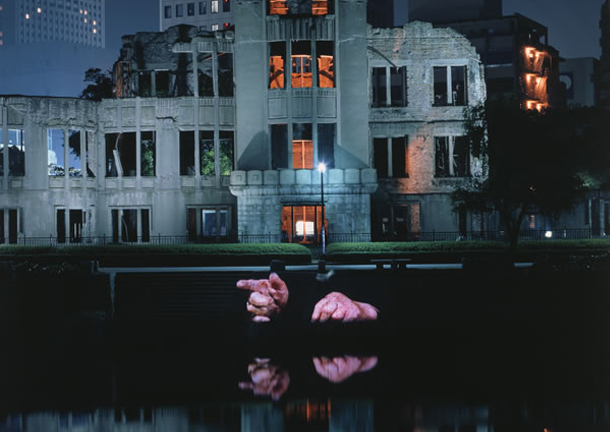
Hiroshima, 1999. Image courtesy of Dynamic Media Institute.
A more modern example from approximately ten years later, Beacon, by media artist Ben Rubin, was installed in November 2010 at the National Museum of American Jewish History in Philadelphia, designed by Ennead Architects. The 5'4" (w) x 8' (h) x 8' (d) sculpture employs 2,688 LED nodes arranged on seven parallel mesh panels, each 64-inches wide by 96-inches tall, spaced 16-inches apart, displaying luminous shapes based on the unique visual structure of the pages of the Talmud. Rubin transforms the layout of each Talmud page into a simplified graphic composition and programs the pages to move in a fluid sequence through the installation's seven planes of light, adding the glow from this essential Jewish text to Philadelphia's nighttime skyline (Soure: EAR Studio).
![]()
![]()
Beacon, 1999. Images courtesy of Ben Rubin.
And while I truly adore both projects above, neither is an instance of a specified digital surface or material. I'd like to draw attention to Hollister 5th Avenue. Hollister Co., a brand that's meant to conjure feelings of ocean, surf, and sun, utilizes an audio and visual projection system to display a live video feed from Huntington Beach in Southern California across its NYC flagship location storefront. My research suggests the displays are Clarity Matrix manufactured by Planar, although neither Hollister nor Planar will confirm. The video projection is accompanied by an audio sound track of ocean waves crashing on the shoreline with a video of a lone surfer paddling out against the waves moving slowly up and down (Source: Digital Signage Universe). The end result is mesmerizing and elegantly juxtaposes the hustle and bustle of one of Manhattan's busiest streets against contrasting imagery of big Pacific waves. Perhaps still art, the Hollister installation replaces the ordinary typology of glass storefront with a transcending digital canvas.
I was able to identify two other examples. First, Hotel Deluxe shows old Hollywood style photography that changes every 45 minutes. It's just enough time to keep it fresh, without changing the feel of this glamorous space. It is in the Lobby and Bar of a boutique Portland hotel property.
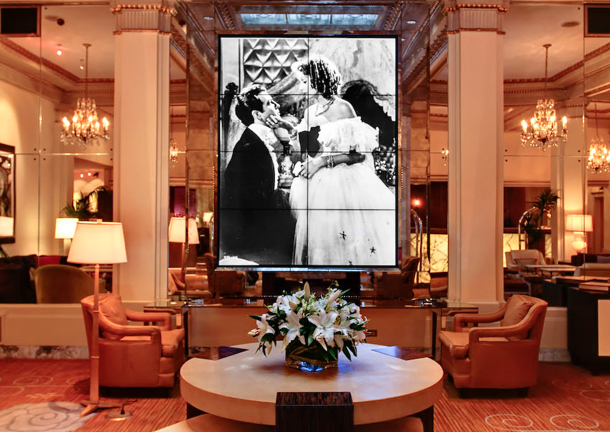
Clarity Matrix installed at Hotel Deluxe, Portland Oregon. Image courtesy of Planar.
The Kentucky Derby Museum built a wall of displays showing footage of horses racing towards you. The display catalyzes the same kind of heart-pounding excitement that captures the spirit of their organization, located in a traditional museum with otherwise static exhibits.
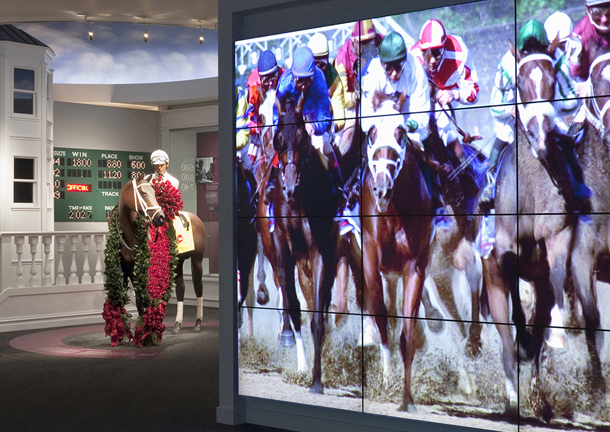
Clarity Matrix installed at Kentucky Derby Museum, Louisville, KY. Image courtesy of Planar.
Returning to my initial thesis, that digital surfaces will emerge as a leading material and surface in the coming years, here are some other interesting applications I spotted recently.
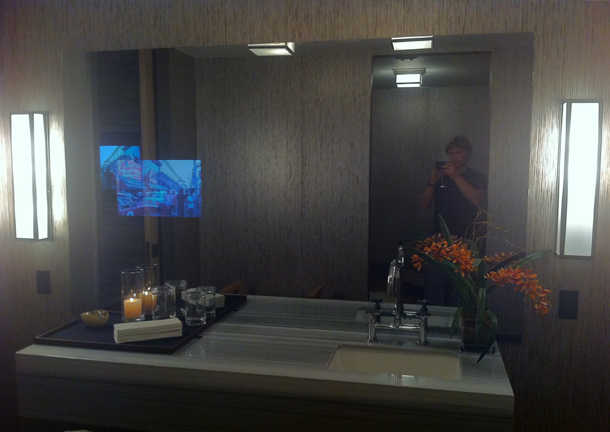
A screen installed within/behind a bathroom vanity.
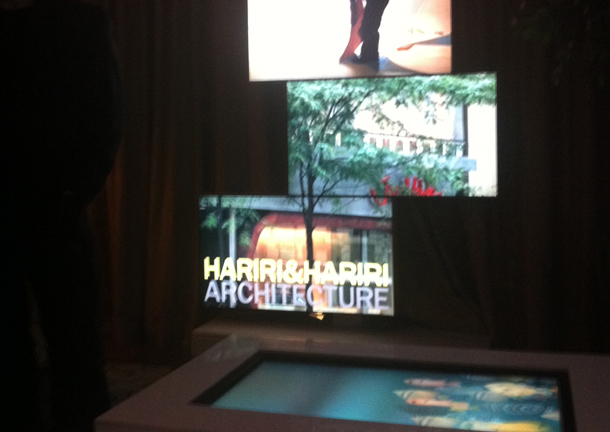
A screen installed into a cocktail table, displaying a fish tank;
and in rear, various screens dis-aligned to show flexibility as a surfacing option.

A screen installed within bathroom tiling. It's difficult to make out, but this screen is within a shower stall.
What's the true opportunity with digital surfacing? In my opinion, it's a combination of two leading concepts: (1) the ability to deploy a non-static finish (alternative to paint, wallpaper, wood paneling, stone), and challenge patrons to consume dynamic spatial boundaries, and (2) the notion of teleportation, whereas patrons are potentially in two locations at once, experiencing two environments at once, a duality between here and anywhere.
Clearly, there are many possibilities, and my gut tells me these technologies will become more price conducive for all project types. Point being, design professionals and homeowners, I dare you to begin imagining the impossible, as tomorrow it will likely be facing you in your bathroom. Time will soon confirm if I'm right!
--
Jacob Slevin is the CEO of DesignerPages.com and the Publisher of 3rings.